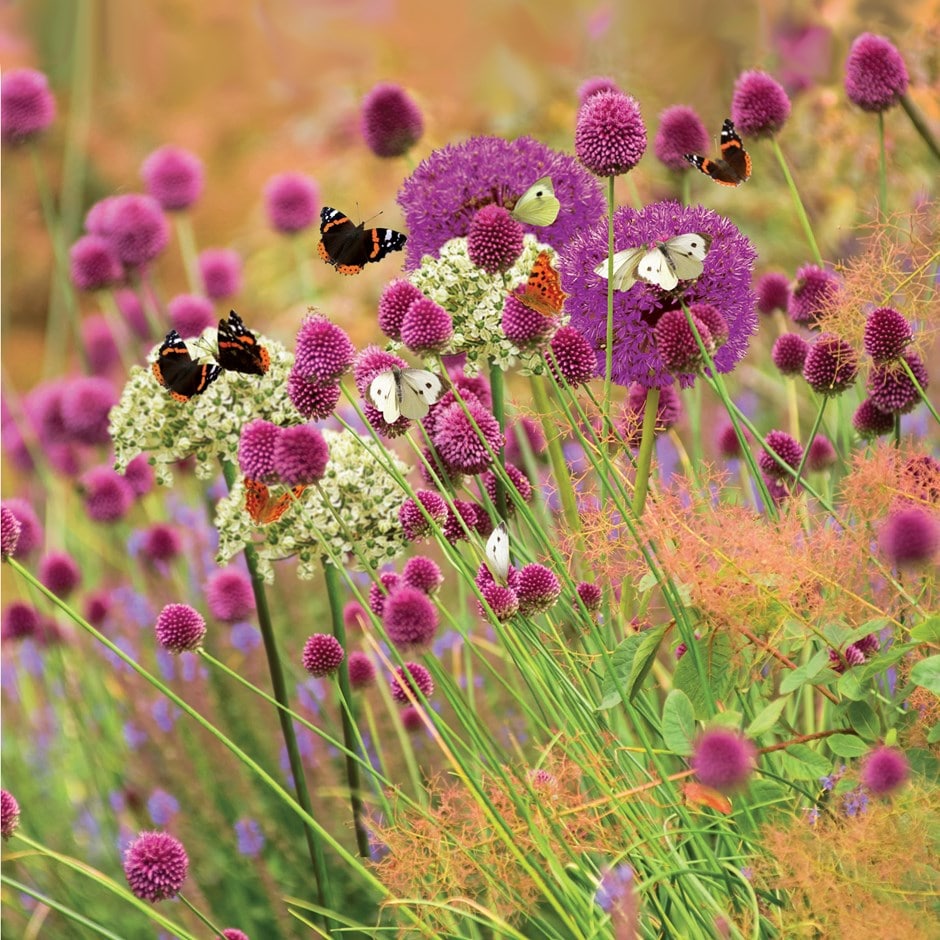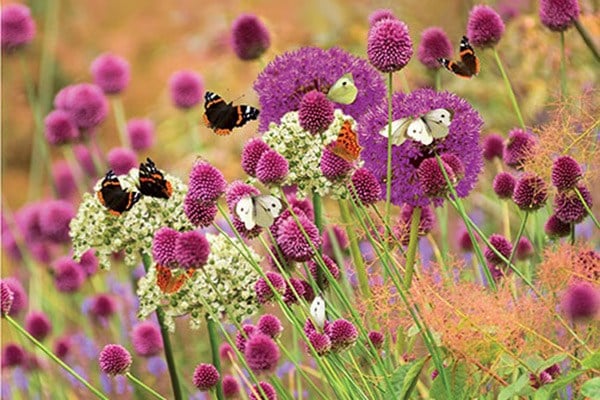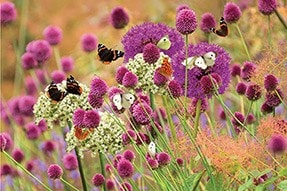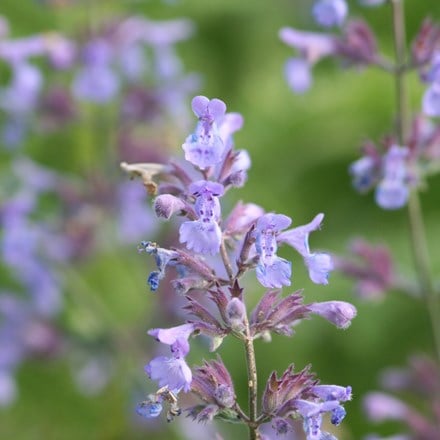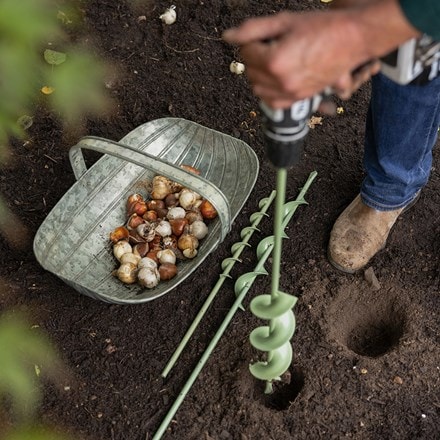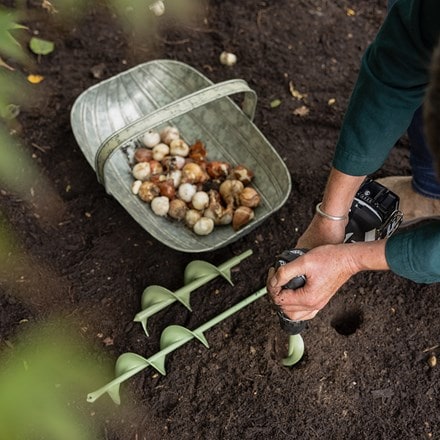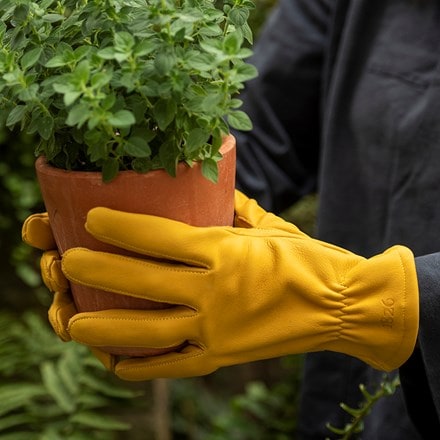Butterfly allium collection
allium collection
- 1 × collection | 45 bulbs
- £17.75 £0.39 each
- available to order from summer
- 2 + 1 FREE collections | 135 bulbs
- £35.50 £0.26 each
- available to order from summer
Delivery options
- Bulbs (only) £4.99
- Position: full sun
- Soil: moderately fertile, moist, well-drained soil
- Flowering period: June to July
- Hardiness: fully hardy
These ornamental onions will fit easily into most planting schemes and offer early summer colour as well as nectar for butterflies. This collection of 45 bulbs contains three very popular alliums, all of which can also be used for cutting.
In each collection you will receive the following:
- 10 × Allium hollandicum 'Purple Sensation': Densely packed umbels of deep violet, star-shaped flowers with a striking architectural silhouette make this particularly good in gravel or prairie-style planting schemes. Grows to 1m.
- 10 × Allium nigrum: Each creamy-white to pale lavender flower has a pronounced ovary at its heart, which looks a little like a green pearl, nestled in the centre. These form in flattish clusters that top the sturdy upright stems. Very pretty - and in big demand after its appearance in Cleve West's garden at Chelsea in 2012. Grows to 75cm.
- 25 × Allium sphaerocephalon: Small, egg-shaped, claret-coloured flowerheads appear like drumsticks on tall, slender stems above strap-like, mid-green leaves in mid- to late summer. These diminutive claret flowers look great dotted amongst bushy perennials or ornamental grasses. They gently fade as summer comes to a close. Grows to 90cm.
Allium bulbs are easy to grow in a sunny spot with freely drained soil, or a good quality potting compost. Ideally they should be planted in September or October, but could also be planted in early November in milder regions.
While keeping the size of the flowerhead in mind and avoiding overcrowding, dig holes roughly three times as deep as the diameter of the bulb and place them at the base, pointy side up before gently infilling and watering to settle them in.
In early spring, as growth begins, apply a balanced, slow-release fertiliser, and allow the plants to die back naturally and completely before tidying away.
While keeping the size of the flowerhead in mind and avoiding overcrowding, dig holes roughly three times as deep as the diameter of the bulb and place them at the base, pointy side up before gently infilling and watering to settle them in.
In early spring, as growth begins, apply a balanced, slow-release fertiliser, and allow the plants to die back naturally and completely before tidying away.
- Pets: TOXIC if eaten; Humans: Ornamental bulbs - not to be eaten
